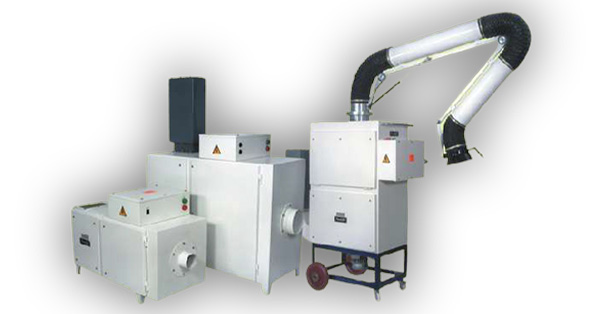Installing a fume extraction system within your shop floor can help to remove smoke, fumes and other fine airborne particles. However, like any machinery, a fume extractor can fail or break down completely if not maintained properly. Regular maintenance keeps the system functioning efficiently, reduces downtime and can help save money over time.
Importance of Regular Maintenance of a Fume Extractor:
Lack of maintenance can lead to multiple issues within a fume extraction system, including:
- Filter blockages that can cause the system to break down.
- Reduced filtration efficacy and efficiency, directly leading to reduced air quality.
- Higher power usage and potential risk of damage to the motor or other parts of the system.
Key Fume Extractor Maintenance Activities:
A well maintained fume extractor can perform better and have a longer lifetime. Below are some of the key tasks in maintaining a fume extraction system.
- Regular inspection of filters
- Check filters every 2 – 4 weeks, depending on the usage.
- In case of electrostatic fume extraction systems, the filters are reusable and will need to be cleaned, as per the manufacturer’s instructions.
- In case of disposable filters, ensure timely replacement of all the filters that are full or damaged.
- Regular Cleaning of Filter Plates – For electrostatic fume extractors
- Remove and wash the plates with mild detergent.
- In case of sticky fumes like paint fumes, stronger cleaning aids will be required to clean the filters.
- Ensure they are completely dry before inserting them back into the system.
- Avoid using any sharp tools that may damage the filter plates.
- Check all moving parts of the system
- Checks should include parts like the fan, motor and any other moving parts that are used inside the filtration system.
- Listen to the sounds of the machine to check for any anomalies.
- Ensure that the motor is not overheating during the operation.
- Ensure that any parts that may seem worn out or unstable are replaced well in advance. This can help to avoid complete system failure.
- Inspect the system’s control panel in addition to all ducts and hoses
- Check for cracks, bends or loose connections.
- Clean any grime on the control panel surface as well as the inside of the ducts or hoses in case there is a visible buildup.
- Secure any loose fittings and connections and replace any parts that are damaged.
- Maintain a log book of all maintenance activities
- Keep a record of cleaning and filter replacement dates.
- Monitor and log any performance issues regularly.
- Keep track of any repairs that are done on the system.
Conclusion:
Whether you are using a welding fume extractor, soldering fume extractor or any other type of fume extraction system, it is critical that the system is maintained well. By following a simple maintenance plan and ensuring regular cleaning and maintenance of the filters and other moving parts in the system, it is possible to significantly extend the life of any fume extraction system. For more information about fume extractors and their maintenance, you can visit our website or get in touch with us today.

